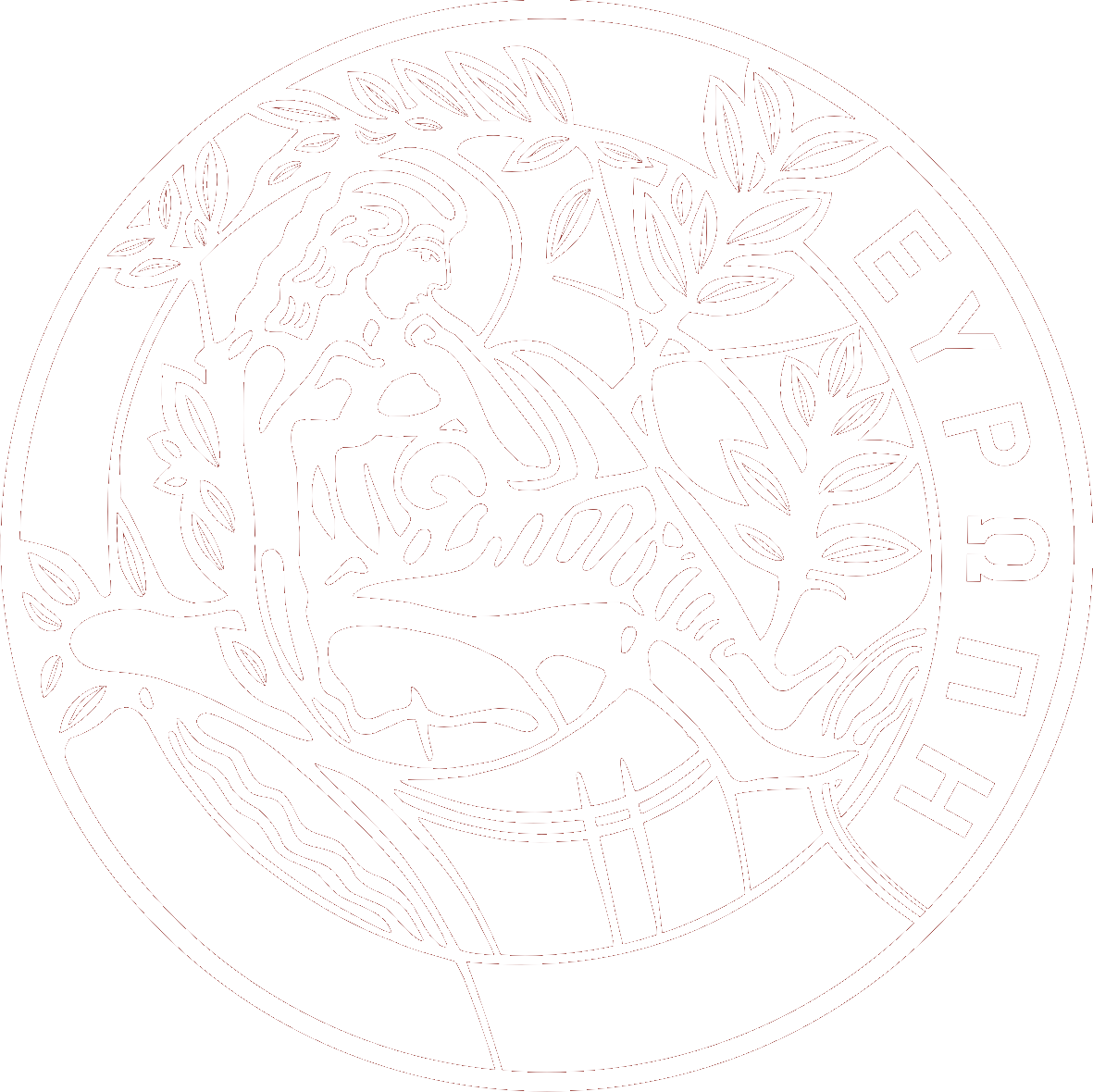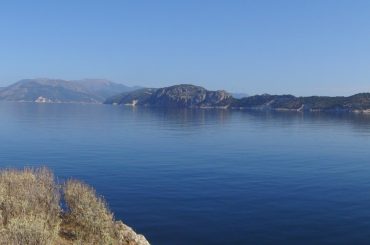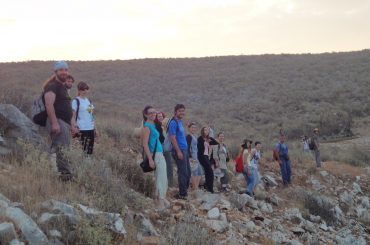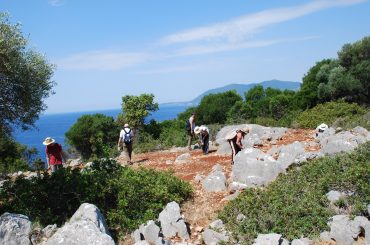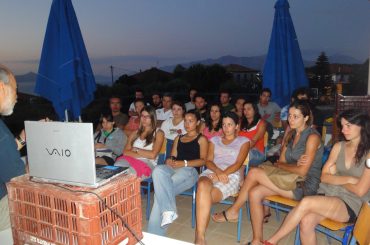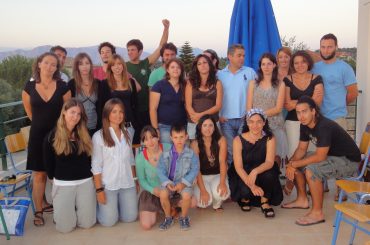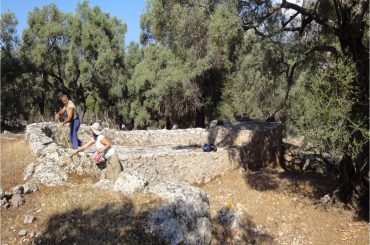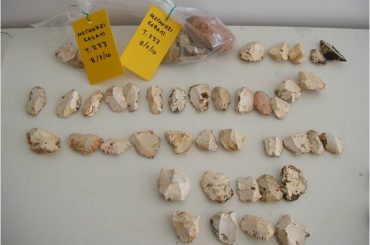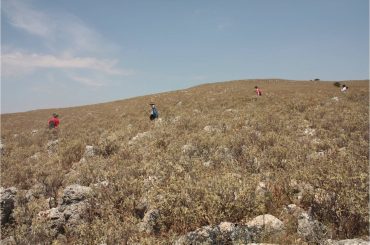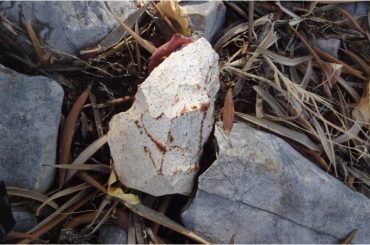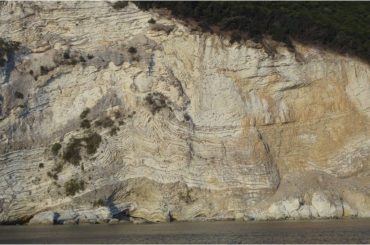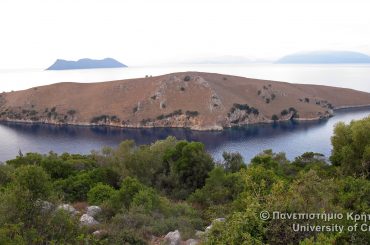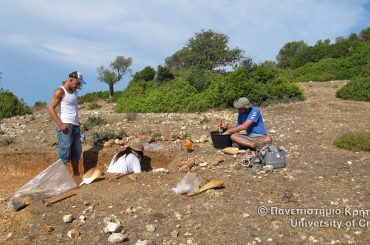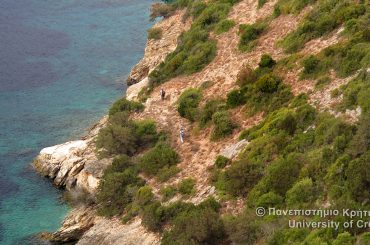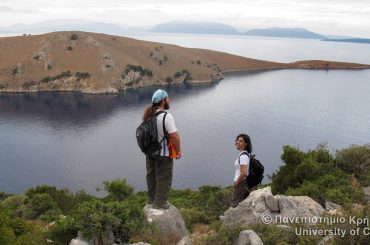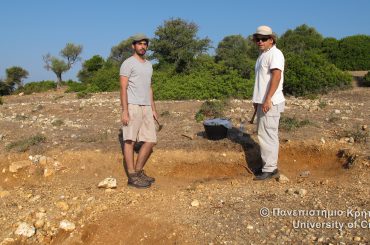Inner Ionian Sea Archipelago Survey (2010-2014)
The “Inner Ionian Sea Archipelago Survey” research program is a diachronic survey with a special interest in Paleolithic archaeology. Its objective is to reconstruct the diachronic history of human presence on the smaller and larger islands of the archipelago and its dynamic response to changes in the terrestrial and marine environment that took place during the Pleistocene and Holocene. This interdisciplinary research, started in the summer of 2010 under the scientific supervision of Nena Galanidou and has been carried out in collaboration with the 36th Ephorate of Prehistoric and Classical Antiquities (EPKA), represented by the Ephors of Antiquities Ms Maria Gatsi (2010) and Dr Olympia Vicatou (2011 to present). The scientific team was staffed by archaeologist Vivian Staikou of the 36th ΕPΚΑ. In addition to archaeologists, it has involved scholars from the fields of geology and social anthropology. Fifty undergraduate and graduate students and two PhD students of the University of Crete participated in the field survey. Two students from the University of York and geology students from the Universities of Athens and Patras were also part of the survey team. The finds have provided material for a PhD thesis and three MA dissertations.
The study extended across the Inner Ionian Sea Archipelago (located between Aetoloakarnania, Lefkas and Kefallonia), on the islands of Meganisi, Kythros, Thilia, Petalou, Skorpidi, Tsokari, Sparti, Alafonisi, Atokos and Arkoudi. These islands represent fragments of the original Pleistocene landscape. During glacial times Lefkas and many of the islands explored were part of Mainland Greece. The two seasons (2010-11) in the field have given exceptional finds documenting the diachronic occupation of this inner archipelago from the Middle Paleolithic until modern historical times. The main volume of finds consists of chipped stone artifacts (flints and cherts) of the Paleolithic, the Mesolithic and the Bronze Age.
Ceramic finds are fewer and are studied by Jeannette Forsén and Cathy Morgan. Although they cover several millennia from the Neolithic period and the Bronze Age to Late Roman times, there are several discontinuities. In contrast, there is a much greater number of unpainted utilitarian sherds that are difficult to date. The number of glazed sherds and late medieval and modern pottery – studied by Joanita Vroom and Myrto Veicou – is also notable. Modern cultural heritage structures such as cisterns, windmills and farm buildings were also placed precisely on the map and either sketched or drawn in architectural detail by Leonidas Koutsoumbos. The research of social anthropologist Despoina Nazou, consisting of archival and field work based on interviews with the residents of Meganisi and recording of their biohistories, has been completed. The ethnoarchaeological research undertaken by Andreas Kapetanios is also completed, on the subject of farming and husbandry practices and the connection of the remains of rural life to the activities of the inhabitants.
Alongside the purely archaeological research, the group of geologists coordinated by Giorgos Iliopoulos, University of Patras and Andreas Magganas, University of Athens, surveyed the geological history and geomorphology of the islands, and recorded the geological relationship of the most important archaeological sites. Moreover, they identified the areas of particular geological interest (e.g. sources of flint as raw material, wetlands, caves, dolines). Finally, in collaboration with the group from the Demokritos National Center for Scientific Research under the supervision of Dr Giannis Basiakos and Konstantinos Athanasas, sampling of sediments for Optically Stimulated Luminescence dating was conducted.
Our preliminary research findings have been published in the Journal of Mediterranean Archaeology (Galanidou 2011); the methodology adopted is an entry in the Global Encyclopaedia of Archaeology, Field Methods (in press by Springer). The findings have been presented at two international conferences: Recent Developments in the Long-Term Archaeology & History of Greece at the Dutch Institute at Athens (December 2011); Speira at the Ioannina Archaeological Museum (November 2012). Our work has also been presented in a series of lectures at the meeting of the European Working Group on the Submerged Prehistoric Archaeology and Landscapes of the Continental Shelf, held in Rhodes in the framework of COST Action TD0902 (October 2010); at the University of York (February 2011); and at NARNIA, held at the Demokritos National Center for Scientific Research (November 2011).
The research project is funded by the University of Crete and the Municipality of Meganisi.
References
Inner Ionian Sea Archipelago Survey
In press, Archaeological survey on the Inner Ionian Sea Archipelago, entry in Encyclopaedia of Global Archaeology. FIELD ARCHAEOLOGY, M. Carver, B. Gaydarska, S. Monton (eds.), Springer Books.
